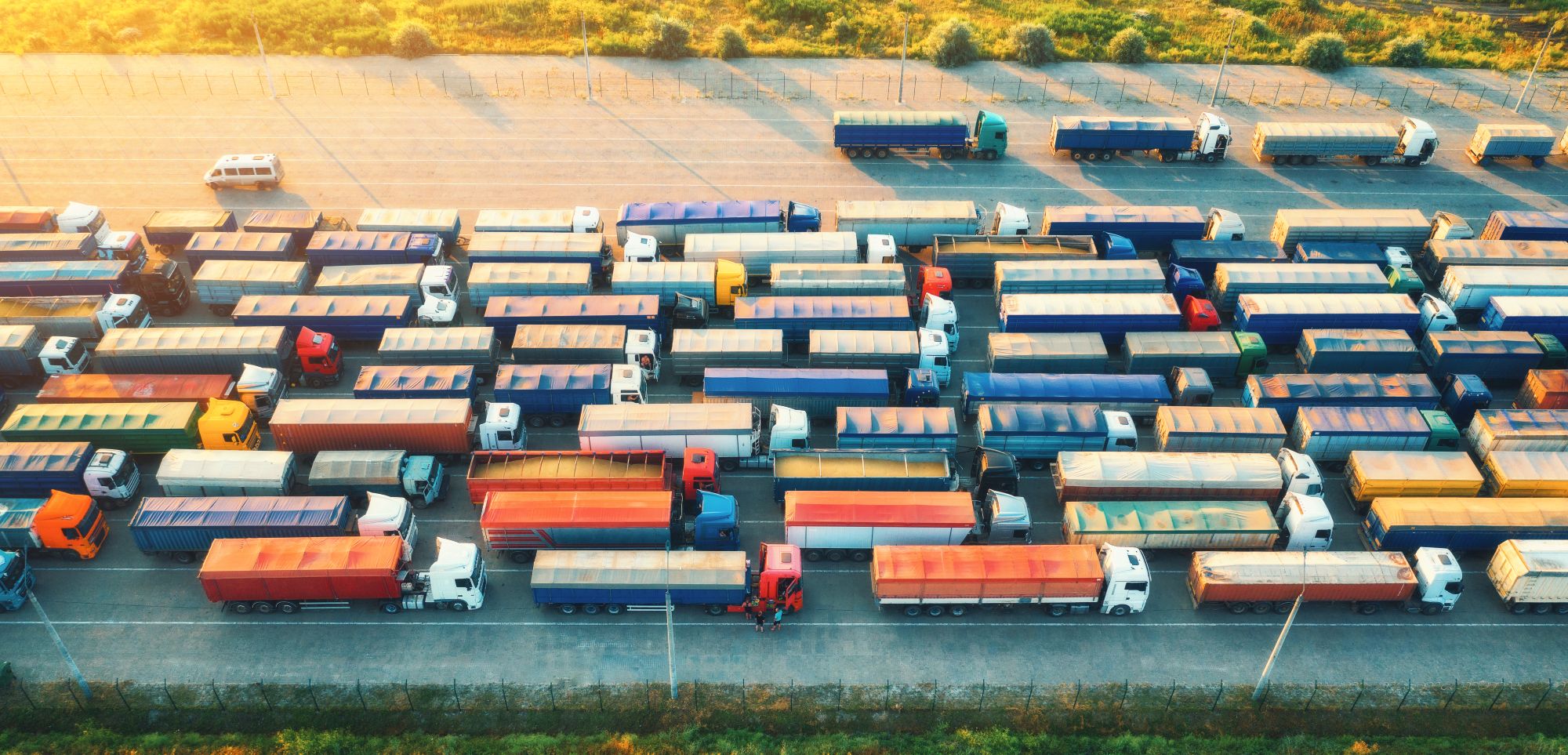
Guest
6 Strategien für das Fuhrparkmanagement, die Ihr Geschäftsergebnis verbessern werden
Erstellt: 16.10.2025
•
Aktualisiert: 16.10.2025
Fuhrparkmanager im Vereinigten Königreich sehen sich an vielen Fronten mit finanziellen Herausforderungen konfrontiert. Ausufernde Betriebskosten aufgrund schwankender Kraftstoffpreise, zunehmender Druck zur Umgestaltung der Nachhaltigkeit, kapitalintensive Fahrzeugbeschaffung, chronischer Fachkräftemangel sowie ungeplante und verlängerte Ausfallzeiten belasten die Bilanz.
Wenn Sie bereits in grundlegende Lösungen zur Optimierung von Routen, zur Verbesserung der Fahrerleistung, zur Minimierung des Kraftstoffverbrauchs, zur Überwachung des Zustands von Anlagen und zur Planung der vorbeugenden Wartung investiert haben, aber noch keine nennenswerten Erfolge verzeichnen konnten, dann sollten Sie die folgenden sechs praktischen Strategien anwenden, um dauerhaft ein positives Nettoergebnis zu erzielen.
1. einen detaillierten Lebenszyklusplan für den Fuhrpark erstellen
Viele Fuhrparkexperten betrachten Anlagen als unvermeidliche Geldfresser und haben sich damit abgefunden, dass sie Ressourcen aufbrauchen. Mit dieser Vorstellung werden ineffizienter Kraftstoffverbrauch, unangemessen hohe Wartungskosten und häufige Ausfallzeiten aufgrund plötzlicher Pannen normalisiert. Unzureichend gewartete Fahrzeuge gefährden die Sicherheit von Fahrern und Ladung, was zu höheren Versicherungsprämien führt und den Ruf nachhaltig schädigt.
Die Entwicklung einer strukturierten Lebenszyklus- und Ersatzstrategie für den Fuhrpark ist unerlässlich, um bestimmte Fahrzeuge aus dem Verkehr zu ziehen, bevor sie die Firmenkasse belasten. So können Sie Ihr Budget umsichtig verwalten und fundierte Entscheidungen treffen, die sich an langfristigen Zielen und nicht am unmittelbaren Bedarf orientieren.
Priorisieren Sie Kosten pro Kilometer, Fahrzeugalter und Kilometerstand. Diese wichtigen Kennzahlen zeigen an, wann ein Fahrzeug ein guter Kandidat für die Ausmusterung ist, anstatt zu warten, bis es unbrauchbar wird. Dieser proaktive Ansatz senkt Ihre Gesamtbetriebskosten und ermöglicht es Ihnen, abnehmende Anlagen weiterzuverkaufen, solange ihr Wert noch relativ hoch ist. Der Erlös aus dem Verkauf kann die Kosten für die Beschaffung und Integration von Fahrzeugen mit teilautomatisierten Funktionen in Ihren Fuhrpark ausgleichen.
2. die Rekrutierung verstärken
Der chronische Arbeitskräftemangel in der Logistikbranche treibt die Kosten für das Fuhrparkmanagement in die Höhe, da die Löhne steigen, sich die Reparaturzeiten für Fahrzeuge verlängern und Verluste aufgrund von Verspätungen und verpassten Terminen entstehen. Dieses Problem gab es schon vor der Pandemie, und der Brexit hat es nur noch verschlimmert. UK in a Changing Europe und das Centre for European Reform schätzten, dass das Vereinigte Königreich nach dem Ende der Freizügigkeit im Jahr 2023 ein [Defizit von 330.000 Arbeitskräften] (https://www.theguardian.com/politics/2023/jan/17/shortfall-of-330000-workers-in-uk-due-to-brexit-say-thinktanks) verzeichnen würde.
Der Schlüssel liegt darin, das Bewusstsein für die Logistik als eine spannende Karriere an der Basis zu schärfen. Fuhrparkmanager könnten mehr tun, um Grund- und Sekundarschülern die Branche vorzustellen. Wenn man erklärt, was Lkw-Fahrer und Mechaniker tun und welchen Beitrag sie für die Gesellschaft leisten, können diese Berufe an Prestige gewinnen. Lehrlingsprogramme können Wunder bewirken, denn die Umfrage von Logistics UK für 2022/2023 ergab, dass [68 % der an der Logistik interessierten Personen] (https://logistics.org.uk/logistics-magazine-portal/logistics-magazine-features-listing/auto-restrict-folder/03-08-23/staff-shortages-halting-the-wheels-of-logistics) nach solchen Stellen suchen.
3. Engpässe in der Einrichtung reduzieren
Schlechte Arbeitsplatzgestaltung ist ein unterschätztes Dilemma im Fuhrparkmanagement. Verlangsamungen bei der Auftragsabwicklung können einen Dominoeffekt auslösen, der letztlich die Betriebskosten in die Höhe treibt. Sie können zu erhöhten Leerlaufzeiten, unzureichender Auslastung der Mitarbeiter, nicht eingehaltenen Lieferterminen und Unzufriedenheit der Kunden führen. Ineffiziente Arbeitsabläufe können Sie dazu zwingen, Ressourcen umzuverteilen, Fahrer und Fahrzeuge umzuorganisieren und Routen zu ändern, um Verzögerungen auszugleichen.
Die Unordnung in den Einrichtungen liegt außerhalb des Zuständigkeitsbereichs der Fuhrparkmanager. Eine enge Zusammenarbeit mit der Lagerverwaltung ist wichtig, um den logischen Fluss und die Geschwindigkeit der Warenbewegungen innerhalb des Raums zu erhöhen. Einfache Verbesserungen wie das Aufhängen von genügend LED-Hochregallampen und der Einbau von Türen, die sich 61 Zentimeter pro Sekunde öffnen (https://www.cornelliron.com/rolling-door-blog/Cornell-blog/how-high-speed-doors-increase-warehouse-productivity), können Fehler reduzieren und die Produktivität steigern.
Nutzen Sie die Technologie, um eine klare Kommunikation zu gewährleisten. Die Einführung einer Softwarelösung, die Lager- und Fuhrparkverwaltungssysteme zusammenführt oder deren Interoperabilität unterstützt, verschafft allen Beteiligten einen vollständigen Überblick über die Abläufe in den einzelnen Abteilungen. Durch die Bildung eines funktionsübergreifenden Teams wird eine Kultur der Zusammenarbeit und der gemeinsamen Verantwortung kultiviert, so dass alle gemeinsam für Fehler verantwortlich sind und Schuldzuweisungen vermieden werden.

4. die Reparaturprozesse modernisieren
Ein innovativer, pragmatischer Ansatz für die Fahrzeuginstandhaltung ist notwendig, um ungeplante Ausfallzeiten zu verringern. Proaktive Tuningmaßnahmen und eine automatische Wartungsplanung sind [entscheidend für die Verlängerung der Lebensdauer von Anlagen] (https://renovated.com/construction-fleet-management-software/), aber die Digitalisierung von Inspektionen und die Rationalisierung von Reparaturen sind ebenso wichtig, um rote Fahnen frühzeitig zu erkennen, die Verkehrstauglichkeit von Anlagen schnell wiederherzustellen und den Technikern zu helfen, effizient zu arbeiten.
Mobile Inspektionen vor Fahrtantritt sind für die präventive Wartung von Anlagen und die Einhaltung von Vorschriften unerlässlich. Apps erfassen Daten in Echtzeit, ermöglichen es den Fahrern, Probleme an das Management zu kommunizieren, und erleichtern die Aufzeichnung von Daten zur Überprüfung, Analyse und Berichterstattung. Digitale Arbeitsaufträge helfen Ihnen bei der Überwachung von Reparaturen im gesamten Fuhrpark und stellen sicher, dass keine Reparaturen die Auslieferungszeitpläne beeinträchtigen.
Modernere Geräte machen Ihren Technikern das Leben leichter und ergänzen Initiativen, die darauf abzielen, ihre Stärken bei der Zuweisung von Aufgaben zu nutzen. Die neuesten Diagnosewerkzeuge können erhebliche Kosten verursachen, aber auch eine große Zeitersparnis bedeuten. Sie machen sich bezahlt, indem sie den vorzeitigen Verschleiß von Bauteilen verringern, Pannen verhindern und Ihnen helfen, niedrigere Versicherungstarife auszuhandeln. Jede neue Technologie ist mit einer Lernkurve verbunden, daher sollten Sie Wert auf eine angemessene Schulung legen, um Ihr Personal entsprechend weiterzubilden.
Nr. 5: Aufbau eines Netzes von Fremdmechanikern
Auch gut gewartete Flottenfahrzeuge können aufgrund der Straßenverhältnisse in Großbritannien auf halber Strecke liegen bleiben. Einem Bericht vom Januar 2024 zufolge, der die von 7.000 Stan the App-Nutzern gesammelten Daten enthält, gab es 1,5 Millionen Schlaglöcher (https://www.highwaysmagazine.co.uk/App-data-suggests-11.5-million-potholes-in-UK/13988) auf britischen Straßen. Diese Zahl deckte nur 13 % des Straßennetzes des Landes ab, was darauf schließen lässt, dass die tatsächliche Zahl der Defekte 11,5 Millionen betragen könnte.
In Gegenden mit kälterem und feuchterem Wetter ist die Wahrscheinlichkeit größer, dass die Straßenbeläge Vertiefungen aufweisen. Die lokalen Behörden füllen jedes Jahr Millionen von Schlaglöchern auf, so dass es schwierig sein kann, Routen im Voraus zu planen, um sie zu vermeiden. Die Integration von autonomen Funktionen in Flottenfahrzeuge - wie Deep-Learning-gestützte Objekterkennung und adaptive Federung - sollte helfen, aber die Vermeidung von Schlaglöchern in Echtzeit bleibt eine ständige Herausforderung.
Umsichtige Fuhrparkmanager sehen Pannen voraus, unabhängig davon, wie gut ihre Fahrzeuge gewartet sind, und konzentrieren sich auf die Bereitschaft. Sie arbeiten mit vorab genehmigten lokalen mobilen Mechanikern und unabhängigen Autowerkstätten zusammen, um defekte Fahrzeuge zu reparieren, Ausfallzeiten zu minimieren und die Produktivität und Sicherheit der Fahrer zu fördern.
Prüfen Sie freiberufliche Kfz-Techniker, indem Sie ihre Referenzen überprüfen, sich über ihre Spezialisierung informieren und ihre Werkzeuge kontrollieren. Mechaniker von Drittanbietern sollten die letzte Option sein. Schulen Sie Ihre Fahrer in der grundlegenden Fehlersuche und statten Sie sie mit der richtigen Ausrüstung aus.
6. autonome Fahrzeuge in die letzte Meile integrieren
Wenn man die Zustellung auf der letzten Meile selbstfahrenden Systemen überlässt, kann dieser kritische Aspekt der Logistik effizienter und kostengünstiger werden. Namhafte Unternehmen wie Amazon, FedEx und UPS haben ihr tiefes Portemonnaie genutzt, um die autonome Zustellung auf der letzten Meile zu erproben, und damit bewiesen, dass fahrerlose Lieferwagen und Drohnen die Betriebskosten der städtischen Logistik senken und die Kundenzufriedenheit erhöhen können.
Erfolgreiche Pilotprojekte zur Integration autonomer Fahrzeuge sollten Unternehmen mit kleineren Flotten zu Innovationen inspirieren. Die vermeintlich hohen Anfangsinvestitionen sind jedoch nur eines der Hindernisse, mit denen viele Flottenmanager konfrontiert sind. Infrastruktur, Vorschriften und Verbraucherakzeptanz sind ebenfalls wichtige Aspekte.
Glücklicherweise hat das britische Parlament das Gesetz über automatisierte Fahrzeuge (Automated Vehicles Act 2024) verabschiedet, um die regulatorische Grundlage für autonome Transporte auf der letzten Meile zu schaffen. Im Juni 2025 teilte die Parlamentsabgeordnete Lilian Greenwood mit, dass die Regierung [noch immer an den Leitlinien arbeitet] (https://www.gov.uk/government/speeches/automated-vehicles-act-2024-implementation), was darauf hindeutet, dass die politischen Entscheidungsträger keine Abstriche machen, um die Interessengruppen zu inspirieren, sobald das Gesetz umgesetzt ist.
Strategien zur Maximierung der Flottenbetriebszeit umsetzen
Die Überarbeitung Ihres Fuhrparks ist entscheidend für die Verbesserung Ihres Endergebnisses, aber jede Veränderung bringt Chancen und Risiken mit sich. Manager können verschiedene Strategien ausprobieren, von detaillierten Lebenszyklusplänen bis zur Integration autonomer Fahrzeuge. Mit Weitsicht, Innovation, Kreativität, Zusammenarbeit, Pragmatismus und Einfallsreichtum können Sie drängende Probleme lösen und neue Herausforderungen meistern, um schwarze Zahlen zu schreiben.




